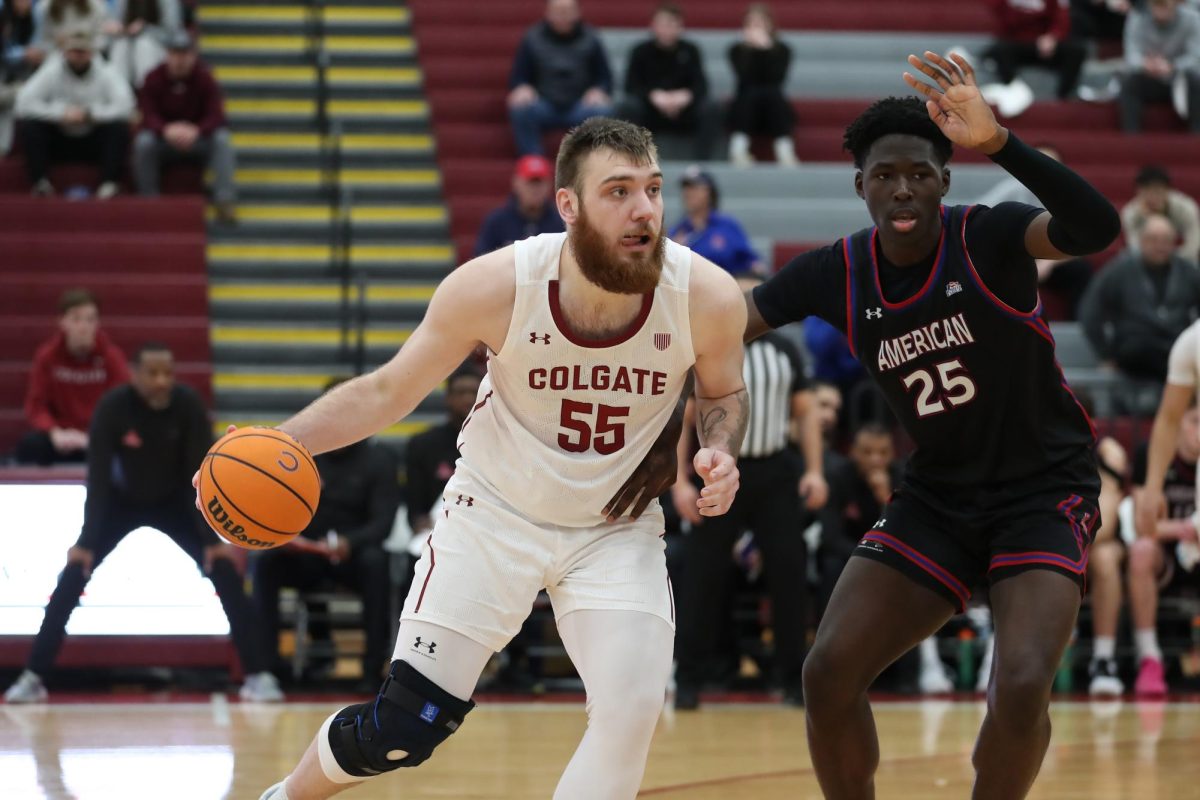Founded in 2009, Colgate University’s Thought Into Action (TIA) program exists to guide students in their entrepreneurial efforts and work alongside them from the development of their first idea to the creation of a viable venture. The program works closely with students, offering support through mentors, monetary funds and more. Through its main two programs, TIA places itself within entrepreneurial and innovation efforts at Colgate and serves as a vital addition to the liberal arts education.
The Thought Into Action Incubator takes place during the academic year. While it is a year-long program, students can be accepted on a rolling basis. The program aims to guide students from the creation of their venture ideas to an end result, which is typically a viable business, but changes depending on what the venture decides to focus on. For example, software-based ventures, such as those designing their own video game, may take longer than those focused on developing physical goods.
Entrepreneur in Residence in the TIA program Travis Millman explained the overall process of getting started with TIA and the various stages of entrepreneurship and development.
“The Incubator is set up as a journey during the course of the year that goes from ideation — what am I going to build, what kind of opportunity are we pursuing — [to] validation; there’s a set of activities that are designed to test whether the idea is viable,” Millman said. “A big part of that involves talking to prospective customers. We put a huge emphasis on that concept of customer discovery, because the last thing you want to do is to spend a lot of time and maybe money only to find out that no one wants it. So ideation validation, product development and then ultimately marketing.”
A new side of the Incubator that was piloted this year is called the idea squad, and is intended for students who wish to be involved with the program but are still unsure of their direction for starting a venture. Through activities and mentorship, students generated ideas for the program or joined other ventures.
Director of Entrepreneurship and Innovation Carolyn Strobel-Larsen spoke about exciting opportunities for students to become involved with TIA regardless of their experience.
“In the coming year, we’ll be looking to provide even more opportunities for students to engage with TIA. One of our big focus areas has been providing opportunities for students to get experience with entrepreneurship even if they don’t have a specific idea,” Strobel-Larsen said. “We’ve also created more on-ramps into TIA during the year for students who don’t necessarily join at the beginning of the Fall semester.”
Millman expanded on how the Incubator propels students on their journey by providing experience in the form of mentors who help guide students.
“We match every entrepreneur in the program with one or more mentors. This is a very mentor-driven program, and one of Colgate’s greatest strengths is amazing alumni. This is a very direct way that Colgate students really benefit from that alumni community,” Millman said. “We try to match the right folks who have that right combination of expertise to best suit that particular venture.”
Sophomore Porter Comstock presented his venture PLNT, which provides inventory technology and a marketplace for the nursery industry, at the TIA Entrepreneur Showcase event. Comstock commented on his experience with the program.
“The alumni network is very strong, and [the mentors] have been very influential throughout my TIA experience,” Comstock said. “I think that Colgate’s connections are one of the strongest aspects of TIA.”
In addition to the Incubator, the TIA Summer Accelerator is another option for students to focus on the development of their ventures. The Summer Accelerator differs, however, because it is more selective, only choosing four or five ventures to each receive a stipend of $10,000.
“The summer is comprised of three portions. We have a very intense boot camp that starts in June that’s two weeks here in Hamilton. We then move into field work, where, using what they learned during the two week boot camp, [students] go out and apply what they’ve learned and really try to move that forward,” Millman said. “We have a three-day capstone event. Last year we had it in New York City; this year, we’re planning it in Boston.”
The TIA program also extends to the local community, where students can learn and practice their entrepreneurial skills.
“We are really lucky to have strong integration between the entrepreneurship offerings that we have here on campus and the local community. We are a partner organization in the Hub, which is a certified New York state business incubator right downtown,” Strobel-Larsen said. “We’ve also launched an innovation fellows and design for America pilot program in collaboration with ITS [Information Technology Services] and faculty colleagues, and this fall we launched 13 Machine, a new pop-up vehicle that’s available for use by student businesses, campus offices and dining services.”
The purpose of TIA also aligns with the skills that students are learning as a part of the liberal arts curriculum at Colgate.
“TIA is an opportunity for students to develop entrepreneurial skills, and many of these skills are the exact same things that students are gaining when they are part of a liberal arts setting. Things like working together as a team, effective communication, problem-solving, resilience and working through failure are all things that budding entrepreneurs build when they are participating in TIA programs,” Strobel-Larsen said. “So we see TIA and entrepreneurship and innovation [programs] more broadly as very much part of the University’s mission as an educational and liberal arts institution.”
The TIA program coordinators and Colgate alumni offer support through mentoring and financial resources for budding entrepreneurs. The program embodies the entrepreneurial spirit and enriches the academic experience of its students. As students pursue their passions, they have the ability to make meaningful contributions and to learn through real-world application.















